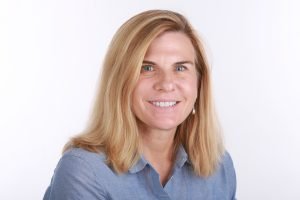#MediaMonday – Stephanie Innes

Photo: courtesy Arizona Daily Star
Today’s #MediaMonday features the Arizona Press Club’s Virg Hill Journalist of the Year, Stephanie Innes of the Arizona Daily Star. Stephanie covers health care, health policy and patient safety, in which she focuses on the Affordable Care Act and access to care, vaccinations, oral health and the health effects of poverty.
Stephanie, time to share:
I’ve been the Arizona Daily Star’s health reporter for nearly 10 years.
A native of Toronto, Canada and a dual U.S./Canadian citizen, I grew up delivering The Globe and Mail and was an avid reader of both the Globe and the Toronto Star. Often I found myself frustrated by unanswered questions in the coverage I read, including articles about murder victims and about the “Scarborough rapist,” who later turned out to be serial killer/serial rapist Paul Bernardo. I thought about how I would write the stories differently, if I had the opportunity. At that time I began considering journalism as a career.
After completing a graduate degree in journalism at Northwestern University, I spent some time in Toronto as an intern at The Globe and Mail. After that stint, I took a full-time job at the Arizona Daily Sun in Flagstaff, Arizona. I’d never been to Arizona, but was instantly impressed by its diversity and beauty.
Early Career
In Flagstaff, I wrote about city government for a year and covered the redevelopment of Flagstaff’s downtown before going on to cover cops and courts. Some of the more memorable stories from that period include an article that chronicled the people who have gone missing in the Grand Canyon, as well as a series of stories about domestic violence sparked by the murders of two women and the attempted murder of a third, who was a high profile city official.
Versatile Reporting
In Tucson, I’ve worked for the Tucson Citizen and for the Arizona Daily Star, and have written about a wide range of subjects, including juvenile crime, American Indian tribes, and faith and values. My reporting has taken me on a range of assignments, including to the aftermath of Hurricane Katrina, where I accompanied search-and-rescue teams from Davis-Monthan Air Force Base; to a camp in Arivaca, Arizona where I spent time documenting the early stages of the “No More Deaths” volunteer efforts on the U.S./Mexico border; and to a suburb of Maryland where, along with a photographer, I tracked an abusive priest from the Diocese of Tucson who was later defrocked by the Vatican.
The Healthcare Beat
Taking the health beat at the Star in 2008 has been the biggest challenge of my career. One of my first stories was about how a Tucson hospital failed to contain a measles outbreak, and that story led to a long-term project about how a decline in the percentage of vaccinated children in Arizona schools was endangering public health.
My Canadian roots provide some first-hand perspective on how different health systems work, though I have never found writing about health policy in a clear way to be an easy task. Nor have I found many health providers who are forthcoming about patient safety violations.
The people I am fortunate enough to interview help me to communicate difficult policies and medical problems. Among the people and recent stories that stand out — the parents of an 18-year-old girl who beat leukemia only to die from the treatment that cured it; the young members of a Tucson family faced with a difficult decision due to a long history of inherited early-onset Alzheimer’s disease; and the relentless Tucson mother who was told her 11-year-old daughter was going to die yet convinced a surgeon to perform a double lung transplant on the gravely ill child. (Update: the girl just graduated from high school).
Affordable Care Act and Medicaid
As Congress began work to repeal the Affordable Care Act and to alter Medicaid in 2017, my job of humanizing health policy intensified. One quarter of Arizona’s residents are on Medicaid. I wrote stories about Arizona’s efforts to add work requirements and lifetime limits to its Medicaid program, and personal stories about paying for health care.
Also in 2017, I worked on a three-part narrative series about a 32-year-old Tucson woman who stopped to help a stranded motorist and ended up losing both of her legs above the knee when she was hit by another car. The story, which was published in December, allowed me to take readers into the world of trauma doctors treating grievously wounded patients, into the world of physical therapists dedicated to helping patients with limb loss, and into the world of technicians dedicated to improving prosthetic limbs. Most importantly, it allowed me to write about a previously healthy, athletic woman who was unexpectedly forced to navigate her medical care amid worries about money, anxiety about her children, and anger over what she lost.
This year, I’ve continued to write about Medicaid in Arizona, access to medical care, as well as solutions for those affected by Arizona’s opioid crisis, and the often overlooked importance of oral health to overall physical health. The learning curve continues.
In My Free Time
When I am not reporting I’m usually riding my bike around Tucson, running along The Loop trail, or hiking in the mountains. I also enjoy walking shelter dogs at the Pima Animal Care Center.
To read more work by me or by any of my Arizona Daily Star colleagues go to Tucson.com (http://tucson.com/). You may also follow me on Twitter @stephanieinnes or @stephreporter on Instagram.

